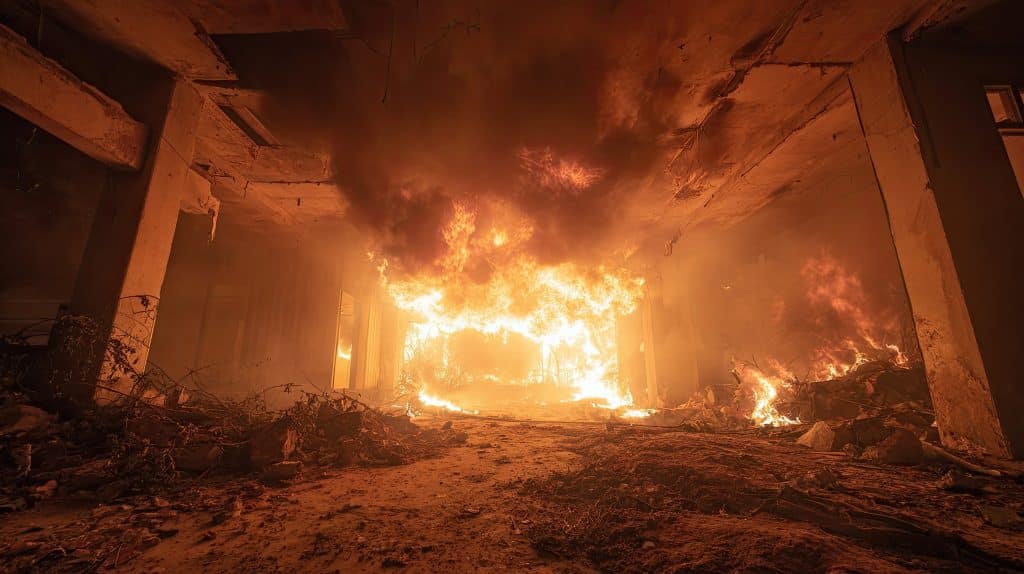When it comes to fire door safety, the smallest details can make the biggest difference. One such detail? The orientation of the intumescent fire seal. It might seem like a minor installation step, but fitting the seal the wrong way round can seriously compromise your fire door’s performance, and may even render your certification invalid.
In this blog, we explain what intumescent seals are, why direction matters, and how to check that yours are installed correctly.
What Are Intumescent Seals?
Intumescent seals (sometimes called fire door seals or fire and smoke seals) are designed to expand when exposed to high heat, sealing the gaps between a fire door and its frame. This expansion helps prevent fire and smoke from spreading into adjacent rooms or escape routes.
They are a vital part of any fire-resisting door assembly and must be installed in line with manufacturer instructions and the fire test evidence that supports the door set.
Can You Install an Intumescent Seal the Wrong Way Round?
Yes. Some intumescent seals are directional, meaning they must be installed in a particular orientation to function correctly.
This often applies to:
-
Multi-functional strips that include both intumescent material and a cold smoke brush or blade
-
Seals where the intumescent material is offset or layered for specific expansion direction
-
Seals designed for specific types of doors or frames, such as timber or steel
Installing the seal the wrong way round can result in:
-
Incomplete or incorrect expansion
-
Gaps that allow smoke or flame to pass through
-
A fire door that fails its intended performance rating
-
Non-compliance with BS 476 or BS EN 1634 testing standards
Common Installation Mistakes
Here are a few things to look out for when inspecting or fitting seals:
1. Brush Facing the Wrong Way
If your seal has a brush or blade for cold smoke protection, this should face outwards, towards the door leaf, not buried inside the frame groove.
2. Offset Seals in Reversed Position
Some seals are designed to expand in a particular direction. If installed back to front, they may expand away from the gap instead of into it.
3. Painted or Over-Filled Grooves
Painting over intumescent seals can inhibit their performance, and using too much adhesive or filler can stop them expanding correctly, regardless of orientation.
4. Incorrect Seal Type
Not all intumescent seals are interchangeable. Using a generic or aftermarket seal instead of the one tested with the specific door set can void certification.
How to Check If Yours Is Installed Correctly
-
Check the label: Some manufacturers print direction arrows or orientation guides on the seal backing.
-
Refer to the datasheet: Every certified seal should come with an installation guide. If you’re missing this, contact the manufacturer or supplier.
-
Consult the fire door certificate: Your fire door should be installed as a tested system. That includes the seal type, placement, and direction.
-
Look for asymmetry: If the seal has different textures, thicknesses, or layers, it’s likely directional.
If you’re unsure, don’t guess. Fire doors are only effective when all components are installed as tested.
Legal and Compliance Considerations
Under the Regulatory Reform (Fire Safety) Order 2005, the Responsible Person must ensure that fire safety systems, including fire doors, are properly maintained and fit for purpose.
Installing intumescent seals incorrectly may result in:
-
Non-compliant fire doors
-
Failure to meet BS 476 or EN 1634 performance standards
-
Insurance invalidation in the event of a fire
-
Possible enforcement action following a fire risk assessment or audit
Who Should Fit or Inspect Fire Door Seals?
Fitting or inspecting fire doors, including their seals, should be done by someone with the competence and training to follow manufacturer guidance and fire test evidence.
That could be:
-
A fire door installer accredited under a scheme like BM TRADA Q-Mark or FIRAS
-
A competent maintenance contractor trained in fire door assemblies
-
A certified fire risk assessor performing a compliance check
Final Thoughts
Fire protection is about precision, and that includes getting the direction of your intumescent seal right. It’s easy to overlook during installation, but the consequences of getting it wrong can be serious.
If you’re responsible for fire safety in a building, don’t assume your fire doors are correct just because they look the part. Take the time to inspect seals, confirm orientation, and compare against the certification and manufacturer data. Because in a fire, every detail counts.
For expert advice on fire protection and prevention measures, contact Martyn Young Fireproofing Consultancy on 07585 896648


